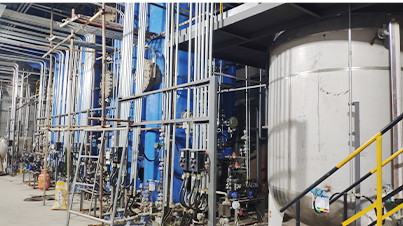Analyzing Recent Trends in HEDP Prices and Market Dynamics
Understanding HEDP Price Factors, Trends, and Implications
In recent years, the demand for HEDP (1-Hydroxyethylidene-1,1-Diphosphonic Acid) has seen significant fluctuations in pricing due to various market dynamics. Understanding the price trends of HEDP is crucial for industry stakeholders, including manufacturers, suppliers, and consumers. This article delves into the factors influencing HEDP prices, recent trends, and the broader implications for various industries.
What is HEDP?
HEDP is a phosphonate compound extensively used as a chelating agent in various applications, including water treatment, metal surface treatment, and as a corrosion inhibitor. Its ability to sequester metal ions makes it valuable in preventing scale formation and corrosion in industrial systems. As a result, HEDP is a critical component in sectors such as oil and gas, power generation, and manufacturing.
Factors Influencing HEDP Prices
1. Raw Material Costs The price of HEDP is heavily influenced by the cost of its raw materials. Phosphorus compounds, particularly phosphoric acid, are essential precursors in manufacturing HEDP. Fluctuations in the prices of these raw materials—driven by market demand, production levels, and geopolitical factors—can directly impact HEDP pricing.
2. Supply Chain Dynamics The supply chain for HEDP involves various stakeholders, from raw material suppliers to manufacturers and distributors. Disruptions in the supply chain, such as those caused by natural disasters, shipping constraints, or pandemics, can lead to shortages and increased prices. For instance, the COVID-19 pandemic highlighted vulnerabilities in global supply chains, affecting the availability and cost of various chemicals, including HEDP.
3. Global Demand The demand for HEDP is closely tied to industrial activities. As industries scale up their operations post-pandemic, the demand for water treatment and corrosion inhibitors has risen, leading to increased pricing. Additionally, emerging markets in Asia and Africa are witnessing growth in industrialization, further inflating demand for HEDP.
4. Market Competition The competitive landscape also plays a significant role in determining HEDP prices. The presence of multiple players in the market can lead to price wars, affecting profitability. Conversely, a limited number of suppliers may lead to increased prices due to reduced competition.
hedp price

5. Regulatory Environment Environmental regulations are becoming stricter, especially regarding chemical usage and emissions. This can impact the production processes of HEDP, potentially raising costs. Compliance with environmental standards mandates investment in cleaner technologies, which can, in turn, lead to increased prices for end consumers.
Recent Trends in HEDP Pricing
Over the past few years, HEDP prices have shown volatility. For instance, there was a noticeable spike in prices during 2021 due to post-pandemic recovery and heightened industrial activities, leading to increased demand. However, fluctuations in raw material prices and supply chain issues have caused occasional dips and rebounds in HEDP prices.
Implications for Various Industries
The fluctuation in HEDP prices holds significant implications for various industries. For manufacturers reliant on HEDP, rising prices can impact production costs, leading to increased prices for end products. It may also affect profit margins, particularly for companies unable to pass on costs to consumers due to market competition.
Conversely, consistent pricing can help companies to better manage their budgets and maintain profitability. For the water treatment sector, stable HEDP prices may lead to more predictable cost structures, facilitating better planning and investment in infrastructure.
Conclusion
Understanding HEDP pricing dynamics is crucial for stakeholders across various industries. The interplay of raw material costs, supply chain dynamics, global demand, market competition, and regulatory environments contributes to the volatility of HEDP prices. As industries continue to evolve and adapt to changing market conditions, staying informed about these trends will enable better strategic decision-making, ultimately benefiting manufacturers, consumers, and the environment. As we look ahead, industry participants must remain vigilant to manage the impacts of fluctuating HEDP prices effectively.
-
Pbtc Scale InhibitorPBTC: A Scale Protector for Industrial Water TreatmentNewsAug.05,2025
-
Organic Phosphonate: An Efficient Defender in the Field of Scale InhibitionNewsAug.05,2025
-
Hydrolyzed Polymaleic Anhydride: Green Pioneer in Scale Inhibition FieldNewsAug.05,2025
-
PAPEMP Polyamino Polyether Methylene Phosphonic Acid For SaleNewsAug.05,2025
-
Flocculant Water Treatment: A Pioneer in Purification in the Field of Water TreatmentNewsAug.05,2025
-
Benzyl Isothiazolinone: An Efficient and Broad-Spectrum Antibacterial Protective GuardNewsAug.05,2025





